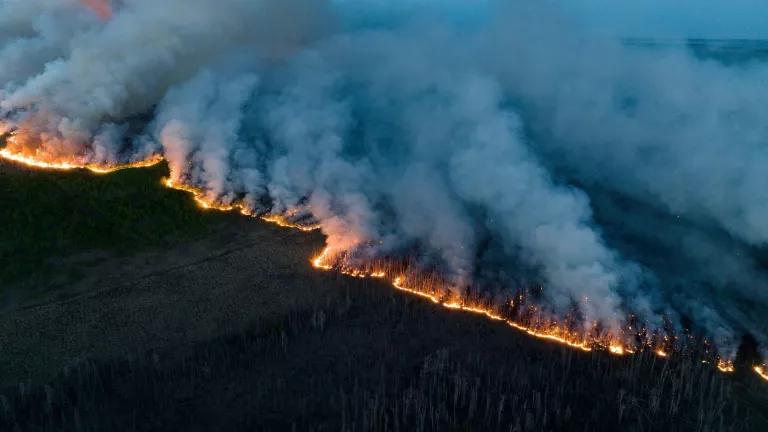Not Your Mother’s Summer: NRDC Maps Hot Summer Days
It’s been said by some climate skeptics, “There’s always been hot summer days, so why are people bellyaching about climate change?” A new NRDC mapping analysis being released today shows that the summer heat of today simply isn’t like summers of the past, for many communities across the United States.
Our analysis finds that between 2007 to 2016, nearly 210 million Americans lived in counties with an average of more than nine extreme heat summer days annually. Areas with more than 9 days of extreme heat are living with more days of extreme heat than they did in the past, based on historical records from 1961 to 1990.
You can explore the map by clicking on a state or on the magnifying glass to type in your address. The NRDC maps show the widespread extent to which global warming, and the extreme heat it fuels, have become local issues.
- The map analysis finds nearly two-thirds of America’s population is now threatened by more summer days of extreme heat than just a few decades ago.
- There are over 20 states plus the District of Columbia where over 75 percent of the population live in counties with an average of more than nine extreme summer heat days from 2007 to 2016 (DC, HI, NV, WY, FL, AZ, MA, AK, CT, TX, RI, UT, OR, CO, CA, WA, NH, KS, NC, DE, MT, TN).
“Extreme heat days” are defined here from June 1 to August 31 in 2007 to 2016. We counted those days on which the daily maximum summer temperatures exceeded the 90th percentile value calculated from 1961 to 1990 daily temperatures, at each weather monitoring station. Counties on the map with an average of more than 9 days of extreme heat in recent summers are living with more of those hot days than they did in the past, based on historical records from 1961 to 1990. NRDC’s map explores down to the county level which parts of the country are most affected by increasingly frequent extreme heat.
With climate changing, heat records keep getting broken. The year 2016 was the second warmest on record, right behind 2015, according to NOAA.
And it’s not just the heat, it’s the health impacts: As temperatures rise, so do the number of heat-related illnesses, emergency room visits, and deaths. Heat waves have been the top cause of U.S. weather fatalities, on average, over the past 30 years.
Scientists warn that an increasing number of Americans will face extreme heat as temperatures rise and the country’s population grows. By one estimate, the U.S. population exposed to extreme heat will grow four- to six-fold by the late twentieth century.
What can we do to protect ourselves from rising summer temperatures? A lot. We can set up heat early warning systems, cooling centers, and hospital and health system preparedness plans. We can plant trees to provide more shade, and use cooler paving and roofing materials in our communities. And we can clean up power plants, vehicles, and other big emitters of heat-trapping carbon pollution, to slash climate change at its source.
Right now, fewer than one-third of states have developed a plan to address the health impacts of living under a changing climate—so there’s still a lot of health protection we need to do. Here are a couple examples of innovative ways that people are advancing climate-health protections:
- Senator Ed Markey and Representative Matt Cartwright recently co-sponsored the Climate Change Health Protection and Promotion Act of 2017. As my NRDC colleague Juanita Constible describes, the proposed bill would boost local climate-health research and the response capacity of state and local health agencies, and encourage federal scientists to share their vast technical knowledge with states and localities. At the same time, the Act promotes local workforce development, and helps the most climate-vulnerable.
- Schools that train health professionals are promoting climate and health education internationally. The Global Consortium on Climate and Health Education is one example.
- Public health, nursing, and medical professionals are getting behind climate change protection and research like never before. The American Public Health Association’s 2017 Annual Meeting theme is “Climate Changes Health.” There will be hundreds of talks and posters connecting the dots between climate change and health.
Our map shows why protecting our public health in the face of climate change is so important: when we limit climate warming, we help keep people healthy. To limit climate warming, we’ve got to reduce carbon pollution, and that’s what happens when we employ clean energy and efficiency measures at the state and federal level. These are huge opportunities that we can’t afford to squander—because temperatures, so far, are still rising.



